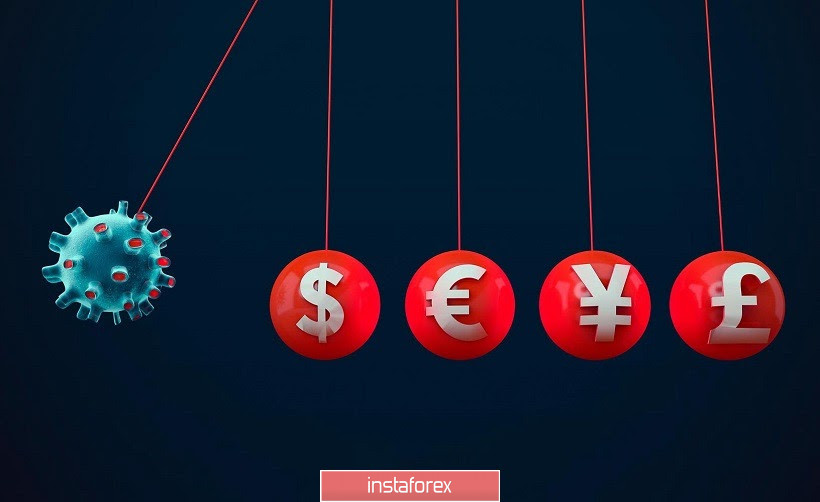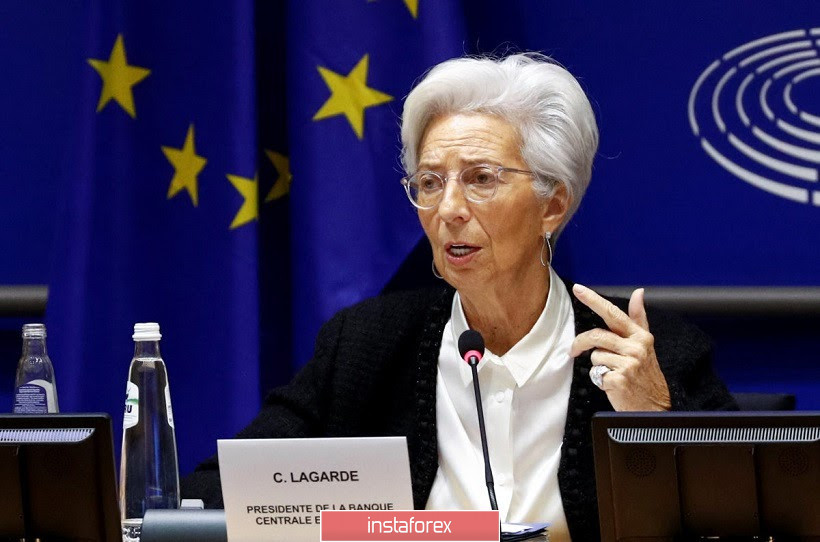The dollar index is rapidly growing. The US currency is growing against nearly all dollar pairs amid an almost empty economic calendar. In the context of the EUR/USD pair, the greenback generally strengthened as the euro weakened, as it reacted to the dovish rhetoric of the European Central Bank President Christine Lagarde. This unipolar fundamental picture forced the pair's buyers to retreat from the positions they had won. In just a few hours, EUR/USD fell by more than 100 points, reflecting the bearish sentiment. The revaluation of the greenback is explained by a general strengthening of anti-risk sentiment in the market, against the background of an increasing number of coronavirus infected around the world. In other words, the dollar is enjoying the status of a safe-haven currency one again.
Let me remind you that not so long ago, for several months, the dollar nearly served as the only protective instrument. Traders found refuge in the US currency throughout most of the spring (and partly the beginning of summer), amid surges in anti-risk sentiment. The dollar bulls were then the main beneficiaries of the pandemic in the context of the foreign exchange market. Since about mid-summer, the topic of coronavirus has "narrowed" to the borders of one country - the United States - so the former excitement around the greenback has come to naught. Of course, the increase in the number of infected people was noted in many other countries of the world, not only in America. But the United States was out of competition here - they were in the lead both in the number of infected, and in the number of deaths, and in the number of daily increase in cases. Therefore, the coronavirus factor ceased to be the greenback's ally, and the outbursts of anti-risk sentiment played in favor of other instruments (primarily in favor of gold).

However, the situation is gradually changing. The United states still occupy leading places in anti-ratings, but at the same time, the general epidemiological picture in the world is not improving, instead, it is getting worse. The coronavirus is returning to countries where it has almost been defeated. For example, the world reported a record number of cases of coronavirus on Saturday: COVID-19 was found in 314,097 people. Furthermore, more than 50,000 patients were identified in European countries - first of all, we are talking about France, Russia, Spain, Great Britain and Ukraine. The situation is rapidly getting worse in Britain. In particular, 3,899 new cases of infection were recorded there yesterday - in recent days this figure was at a level that has not been observed since May. As a result of today's meeting, British Prime Minister Boris Johnson said that it is already possible to speak about the second wave of the epidemic with confidence. At the same time, he added that, on the one hand, he "does not want" to announce a repeated lockdown in the country. On the other hand, he warned that the government would consider options to strengthen the existing restrictive measures. In Spain, new quarantine measures have already entered into force, which are designed to curb a steady increase in new infections and an ongoing increase in the number of deaths. In the Czech Republic, the Minister of Health resigned against the background of a rapid jump in the daily increase in the number of cases. This country is also tightening quarantine restrictions. A similar situation, to one degree or another, has developed in the rest of the EU countries.
It is noteworthy that the heads of European states have ruled out the option of a second lockdown (for now). But at the same time, restrictive measures are being strengthened everywhere. It is obvious that such trends will negatively affect the dynamics of key macroeconomic indicators in Europe. At the same time, the dollar was inspired by Trump's recent statement that Americans will have massive access to the vaccine by the end of this year. Of course, his rhetoric must be viewed through the prism of the election campaign - but still, the topic of COVID-19 is so painful for traders that the head of the White House was "taken at his word." Moreover, many specialized experts admit the reality of such a scenario.

In turn, the European currency has suffered today due to Lagarde's rhetoric. Let me remind you that she did not focus on the euro's appreciation at the ECB's last meeting. Lagarde casually mentioned this, saying that the central bank "will closely monitor the exchange rate of the currency." But today Lagarde has intensified her criticism - during her speech, she said that the rise in the euro is putting significant pressure on prices. At the same time, she was pessimistic about the future prospects of the European economy - in her words, the recovery process is "uncertain, uneven and not dynamic."
This fundamental background contributes to a further decline in the EUR/USD pair in the medium term. The market was again afraid of the coronavirus, and the euro came under additional verbal pressure from Lagarde. From a technical point of view, the pair is currently testing the upper border of the Kumo cloud on the daily chart (1.1730 mark). If the bears push through this support level, they will open their way to the lower border of the mentioned cloud, which corresponds to the "round" level of 1.1600. You can consider short positions after sellers are able to gain a foothold under the 1.1730 target.





















